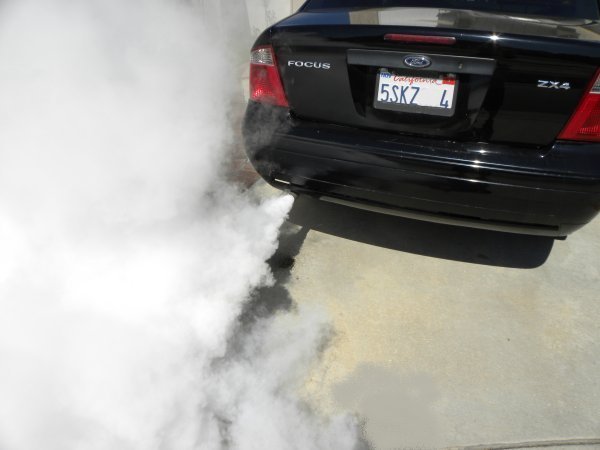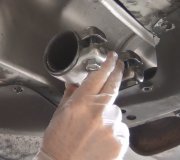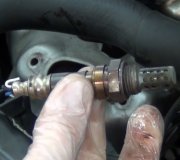Hi who; Randy here.
Head gaskets are the most likely possibility, but a warped or cracked head must also be considered. Mechanics use a tool with two chambers of special dark blue liquid to check for leaking head gaskets. They draw air from the radiator through the glass cylinder. If combustion gasses are present, the liquid will turn bright yellow.
Talking to the tool or holding it by the exhaust pipe will do the same thing to test that the fluid is not contaminated with antifreeze. Contaminated fluid or fluid that was frozen will not respond.
When replacing the head gaskets, check for a warped sealing surface, especially if you can't find a corroded spot in the gasket. If you don't have an accurate straightedge, your local machine shop can make the measurement for you. As a general rule, .005" in any direction is the limit for a cast iron head, and.002" for an aluminum head. It is important to note that overhead cam heads must not be machined. They must be straightened to eliminate the warpage. Machining them will make them seal properly, but the camshaft journals won't be in a straight line anymore.
If you've never done head gaskets before, it's a good idea to invest in a service manual, just so you'll have the reference material handy. Buying one is less expensive than having a shop perform the repairs, ... As long as the job doesn't have to be done over! Torque specs and sequence are important. There will be special procedures for torquing aluminum heads. Head bolt threaded holes should be cleaned of debris. Surface prep is important too for the gasket to bite in and seal. Most mechanics use a small rotary air tool and a wheel with plastic fingers or a small round Scotch pad for gasket removal and to rough up the metal surfaces. Simply scraping off the old gasket will result in failure to seal properly.
Caradiodoc
caradiodoc
Monday, March 1st, 2010 AT 11:57 AM



